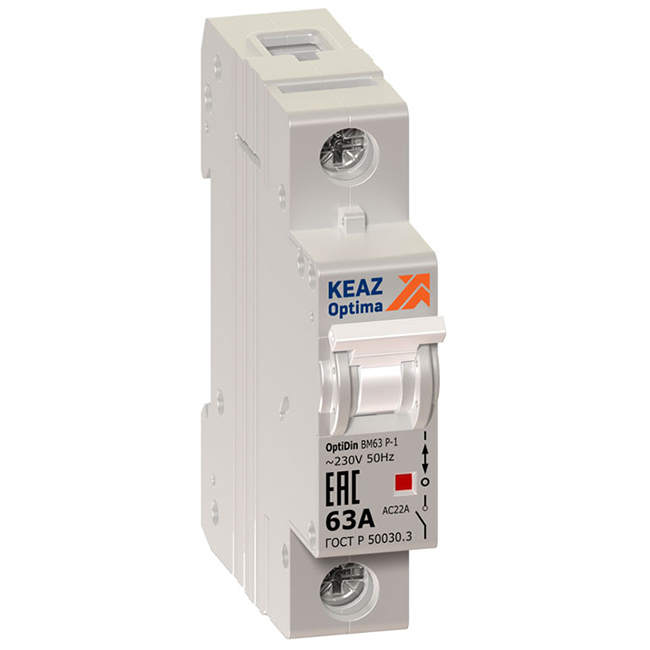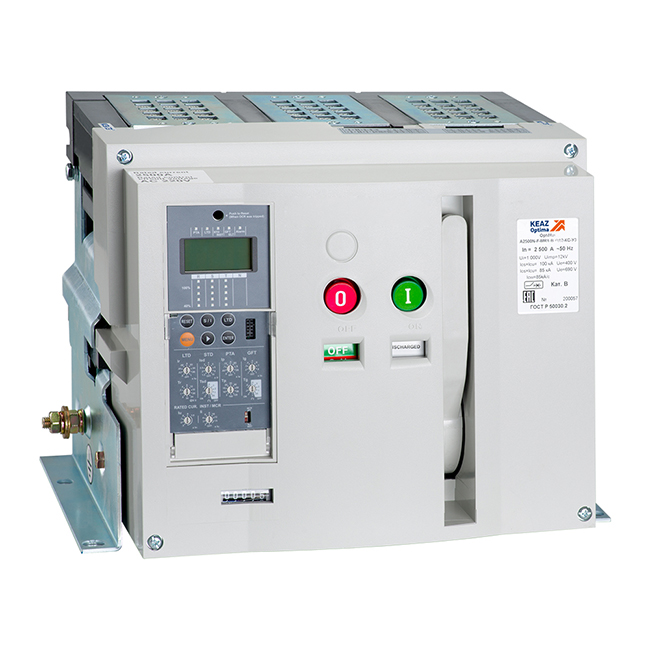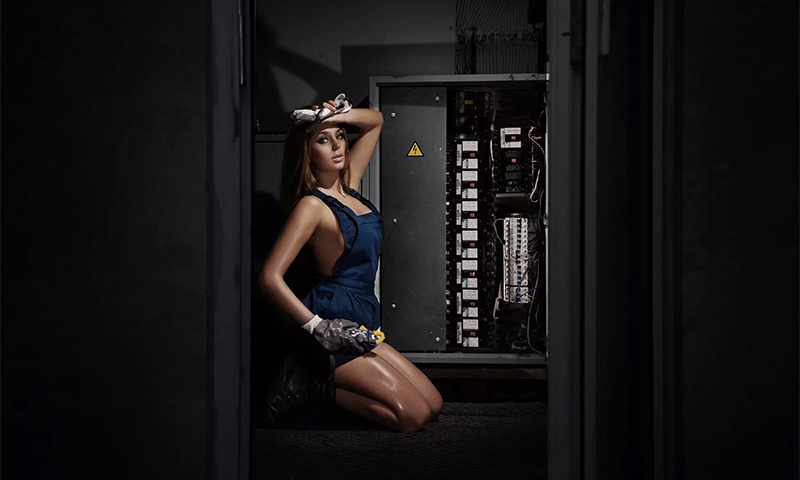The circuit breaker is an integral part of the safety of electrical networks in a private home and in the enterprise. Without this device, there would be much more fires and broken appliances. But how to choose a circuit breaker for a house, apartment or garage, so that it comes up on the security parameters and not to overpay? We have prepared a comprehensive answer to this question.

Content:
Best manufacturers of circuit breakers - which company to choose
When you need a good device for the automatic separation of electrical circuits, then turn to industry leaders:
- ABB;
- DEKraff;
- EKF;
- IEK;
- TDM.
For those who want more specifics on popular models, we recommend reading the review with the best devices. Here we will continue the topic of self-selection of the circuit breaker according to its parameters.
The principle of operation and the device circuit breaker

This electrical device is also called automatic. He received such a short name due to the essence of his action - automatic triggering.
The principle of operation of the apparatus consists of two functions:
1. Overload protection;
2. Short circuit blocking.
The first occurs when more appliances are plugged into the network than the existing wiring can handle. The strength of the current in the circuit depends on the power consumption and may increase as new devices are connected.
For example, with copper wiring with a cross section of 2.5 mm2, an electric kettle (2.5 kW), a microwave (2 kW) and an oven (3 kW) were turned on in the same room. The total current consumption will be about 34 A. If these devices work simultaneously for a certain time, the current flowing through the wiring will heat it up strongly and the winding will begin to melt.
With further reversal of events, the heated wires can help ignite the plastic parts of the wiring, sockets, or simply burn out somewhere in the wall and break the contact. To restore the chain, it will be necessary to drill the concrete partition and lay the new wire.
To protect the network from such overloads, the automat has a thin plate that reacts to a rise in temperature in the wires. When the nominal value is reached, the plate begins to deform and presses the lever on its edge and opens the contact.
Due to this, devices are used on the wiring inputs in:
1. Apartments;
2. Houses;
3. Garages;
4. Workshops;
5. Resting places (cinemas, restaurants, hotels, sports clubs);
6. Businesses.
They are placed in the circuit immediately after the electricity meter. Some models are mounted directly into it, others are located under it, and still others are mounted in a separate shield.
The second function of the circuit breaker is short-circuit tripping. When the wiring in the home appliance or chandelier is burnt, then its live parts will become bare. Touching each other, an electric arc appears, capable of lighting the lighting equipment and everything around it.
Here instantly, the second device node is activated - electromagnetic. It reacts to a significantly increased voltage and pushes the head to the lever, which opens the contact.
When two sides break in the automaton case, an own electric arc is formed, therefore, to extinguish it, a special chamber with gratings is created, where the high-temperature flame breaks and fades.
All this does not allow a fire to develop and keeps the internal parts of household appliances intact, thanks to which it is enough to disconnect the appliance from the network, find a closed wire and replace it with a new one.
The circuit breaker device includes the following elements:
1. Lever to turn on;
2. Terminals for wiring;
3. Latch for fixing on a special rail;
4. Two internal contacts;
5. Thermal release mechanism;
6. Electromagnetic block;
7. Arc chute;
8. Protective case.
Types of circuit breakers
Household

These are often modular units having a compact body. They are installed under the electricity meter or carried into a small shield of plastic in the wall. The circuit breaker protects all wiring from overload and short circuits.
Such models are used in apartments, houses, garages and small workshops. For housing arrangement it may take more than one circuit breaker to separate the zones on the load from electrical appliances.
Advantages:
- cheap;
- many options for rated current;
- compact;
- quick fastening on the rail;
- designed for many cycles of inclusion;
- instant response.
Disadvantages:
- due to the occurrence of an electric arc inside the case, when the circuit is broken, a slight burning smell from the device appears over time;
- weak and powerful models are very similar in appearance (the values at face value are visible only on the inscriptions) and, if you put a powerful machine on weak wiring, then it will not have time to work when overloaded.
Industrial

Such models are installed in enterprises to protect machine tools and other equipment. It is necessary for service stations, welding, turning and drilling machines. Their installation is carried out in protected panel board by a person with an appropriate tolerance.
Contacts and internal parts are designed for high voltage and high temperature operation.
Advantages:
- transfer rated current up to 250 A;
- sequential shutdown of one line, while maintaining the work intact;
- installation in any spatial position;
- there are models for 3-4 poles;
- guaranteed break function with green flag indicator.
Disadvantages:
- very expensive;
- cumbersome;
- for installation requires a special panel cabinet.
Circuit Breaker Selection Parameters

Rated current
The power of the circuit breaker is called the rated current. Its parameters are from 1 to 250 A. This is the value at which the device operates (cuts off the circuit).
If you set the device too weak, it will constantly "knock out" the light, even when you turn on one iron or kettle. Too powerful models, on the contrary, will not "feel" the excess of the allowable voltage for specific wires, which will lead to damage to the latter.
The optimal value is calculated individually. It all depends on the cross section of the wiring and its material. For example, good modern wiring from copper with a cross section of 2.5 mm2 is designed to connect a sufficient number of devices. An automatic machine is selected for it, taking into account household appliances in the room, the wiring from which is connected to the terminals of the device.
Here they sum up their total number of watts consumed (2000 W microwave + 2500 W kettle) and divide this value by 220V. It turns out 20. It will be the optimal value of the rated current for such a room.
1. In the bedroom, where there is a 300 W TV and 2000 W air conditioner, an automatic 16 A machine is enough.
2. In the garage, where you can connect a tool or a 3000 W machine, you will need a machine for 25-30 A.
You can install several different circuit breakers, each under its own line (kitchen, hall, bedroom, garage) and another common (40-50 A), which will save the input from overheating if individual devices do not work, but the total network load will be high (included all appliances in each room).
But it is permissible with a sufficient cross-section of the wiring of copper. If there is an old aluminum wiring, then the calculations will be different.
Type of machine
There are two machines of the type - modular and power.
1. The modular automatic is easy to install in an apartment or garage, where there is a gate valve for this in the electrical panel cabinet. It is standard in all devices and is attached instantly. You need to buy a plastic shield with a door (built-in or external) and carry out installation.
2. The power machine is installed on the bolted connection and requires a separate wall or floor cabinet corresponding to GOST. It takes up much more space and is suitable for workshops and businesses.
Number of poles
After the name of the circuit breaker model is an indication of the number of poles. This is the number of lines that can be connected to the device. Only the phase passes through the pole, so three rooms can be “hung” on a three-pole unit at once - a bedroom, a living room and a kitchen.
This separation is beneficial in the event of a breakdown. For example, if the wires in the chandelier are closed, then only the toggle switch through which the wires go to this room will turn off. Throughout the rest of the apartment the light will continue to burn without harm to the equipment.
But it makes sense when all the rooms have the same power consumption (the sum of the power of all the appliances in each room is about the same). If the kitchen is much more household appliances than in the bedroom, then connect them to such a circuit breaker unprofitable, and it is better to install several single-pole, but with different rated current.
1. For one room - a garage or a bath, suitable single-pole device.
2. Four-pole will help save when you need to connect four offices in the building with the same equipment (computers, printers, kettle).
Device class
All automated protections are divided into classes, which should be chosen correctly:
1. B - suitable for long power lines, but not designed to connect household appliances. It can be connected to the light at the entrance or on the street.
2. C - optimal for outlets and home appliances. It is bought in apartments and houses, hotels and restaurants.
3. D - allows you to conduct a line from itself and monitors the safety of transformers and other powerful devices. Suitable for small workshops or garages with appropriate equipment.
4. TM-D - refers to the industrial sector and is designed for machine tools and production units.
Breaking capacity
This value shows how strong the current is able to move the circuit breaker to work and protect the wiring, but it does not break itself.
The parameter ranges from 1.5 to 36 kA. The impact on the device can be so strong that the device will disconnect the circuit, but after that you will need to buy a new machine.
1. For an apartment, one should choose between 4.5-6 kA.
2. In a private workshop, it is better to have models with a rating of 10 kA.
3. For enterprises, automatic machines are needed that will continue to work even after an overload of 20-30 kA.
Voltage
Although the main actions occur with the characteristics of current amps, all models of circuit breakers are divided according to their intended purpose for a particular voltage.
1. If a voltmeter is 220 volt stable at the outlet, then it is with these parameters that a protective node is needed.
2. If the voltage jumps from 180 to 240 V, then it is worthwhile to find a model of 240 V.
3. There are broader performance from 230 to 400 V, which is suitable for any terrain.
4. For three-phase networks, they acquire devices of 500-690 V, which have four connection terminals on each side (hanging all three phases and the neutral wire).
Contact type
Through the fixed and movable contacts of the machine, constant current flows. A short circuit leads to a separation of the sides and the formation of an arc. It scorches the surface and impairs conductivity upon next contact. But a certain number of uninterrupted cycles embedded in each model.
1. If the protection device is bought in a house or apartment, where a short circuit happens rarely, then buy a switch with regular contacts.
2. For businesses and workshops, where the risk of overloading and contact of exposed wires is higher, models with silver-coated plates are required.
Terminal Location
Connecting wires to the circuit breaker occurs by fixing them at the terminals. Entry points on the body can be located in front or behind, and can be of the combined type.
1. If the location of the device itself allows access to the sides of the case and the length of the wires is enough to remove it for connection, then it is better to choose the rear terminal arrangement. So you can protect the live parts from accidental contact (despite the installation in the shield).
2. When the machine is in a narrow box and there are short wires left, then it is difficult to reach the rear of the case, and you cannot take it out outside (there is not enough wire), so they buy models with front connection.
Type of shell
The circuit breaker is in a molded rectangular case or in the form of a plug, screwed directly into the meter.
1. For installation of the first requires a place on the wall and a special locker. If there are resources for this, it is better to choose this option, because here you can divide the lines into several branches.
2. Cork automat set for general security wiring, but if closed in one room, the light will disappear everywhere. This is suitable for the garage (if it only needs light and charging for the car battery) or if there is no space under the meter for the box.
Which circuit breaker to choose

1. For general input into an apartment or house, where new wiring and many household appliances, an automaton with a rated current of 40 A, breaking capacity of 6 kA, per pole, class C, of modular type, rated for 220 V, with ordinary contacts and molded case.
2. A garage with a welding transformer and other powerful tools are suitable for class D models, modular type, per pole, with a rated current of 25 A, a breaking capacity of 10 kA rated for 220–400 V, with silver-plated contacts and a front connection.
3. For powering street lighting choose a model with a rated current of 16 A, one pole, class B, breaking capacity of 4.5 kA, operating voltage of 220-230 V, modular type.
4. Separately in the kitchen, where there is a microwave, oven and kettle, a Class C circuit breaker suitable for 25 A, with the ability to transfer loads to 6 kA, single-sided, modular, with terminals on the front side for compact placement in the switchboard.
5. Office premises with the same power equipment in each room (air conditioning, several computers and an electric kettle) will require a class C switch, for four poles, a rated current of 32 A, a breaking capacity of 10 kA, silver-plated contacts in a molded case.
6. For a production workshop with machine tools, a TM-D class machine, 60-100 A, three poles, 36 kA breaking capacity, power installation method is required.
How much is a circuit breaker

1. For a general entry into the house, the machine costs 200-500 rubles.
2. For the garage, the device can be bought for 450-1000 rubles.
3. To connect the street lighting will have to buy a switch for 99-300 rubles.
4. To connect the line from the kitchen, a model worth 300-700 rubles is enough.
5. To equip lines from several cabinets with an automatic switch, you have to pay 500-1800 rubles.
6. For production needs buy models for 10,000 rubles.
It will be interesting to friends too










